Key takeaways
- Activist teacher resources encourage educators to connect curriculum with real-world issues, fostering critical thinking and social justice in the classroom.
- Technology, particularly tools like Prodigy, enhances engagement by making learning interactive and personalized, turning challenges into enjoyable experiences.
- Implementing game-based learning strategies and celebrating small victories boosts student confidence and shifts their mindset towards math.
- Measuring success through detailed feedback and progress tracking helps teachers understand student needs and encourages a growth-oriented learning environment.

Understanding Activist Teacher Resources
Activist teacher resources are more than just lesson plans or tools—they’re a call to reflect deeply on what and how we teach. When I first encountered these resources, I realized they challenged me to consider the sociopolitical contexts behind the curriculum, pushing me to connect math lessons with real-world issues. How often do we pause to think about the impact of our teaching beyond test scores?
These resources designed for activist educators help us incorporate critical thinking and social justice into everyday subjects. I found this approach not only transformed my classroom dynamics but also made learning more meaningful for my students. It’s incredible to see how embedding activism into education can spark curiosity and empower young minds to question the status quo.
Isn’t teaching about more than just content delivery? Activist teacher resources remind me that education is a powerful platform for change. They inspire me to create spaces where students feel seen and heard, nurturing not only their intellect but their sense of agency. This, to me, is the heart of teaching with purpose.
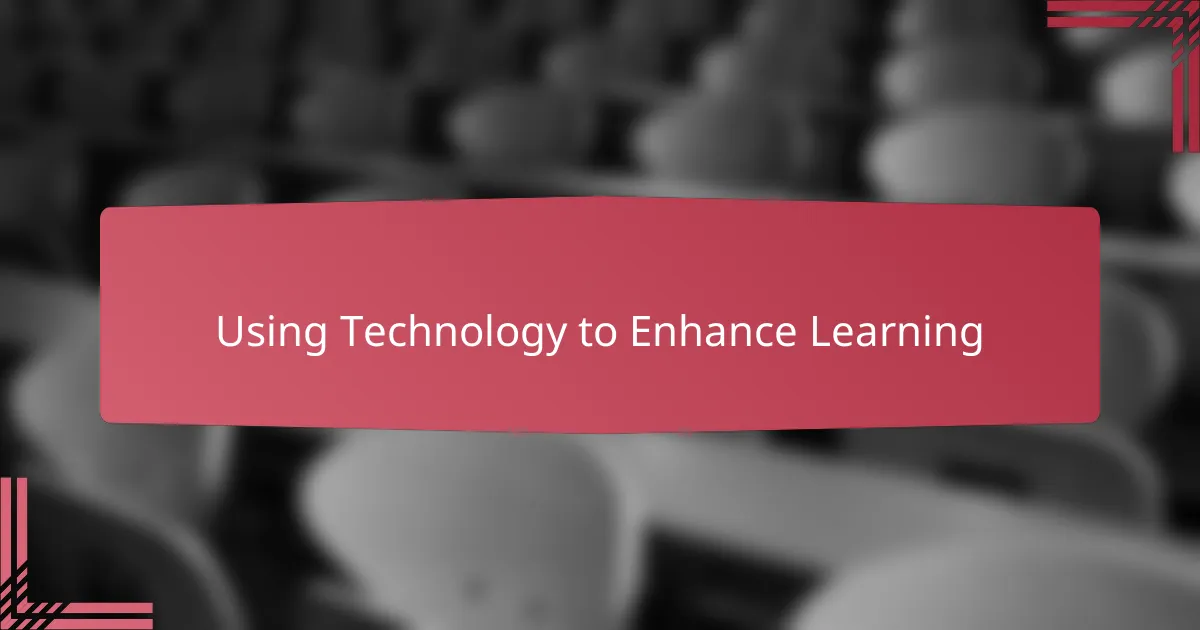
Using Technology to Enhance Learning
Technology has this unique ability to transform abstract math concepts into interactive experiences. When I started using digital tools like Prodigy, I noticed my students becoming more eager to dive into problems rather than shy away. It’s as if the screen creates a safe playground where mistakes are just part of the game.
Have you ever seen a student’s eyes light up because they conquered a tough challenge on their own? That moment, sparked by technology, feels incredibly rewarding. In my experience, tech doesn’t replace teaching—it amplifies it by making learning engaging and personalized, which is exactly what activist educators need to nurture critical thinking.
Of course, technology alone isn’t a miracle fix. But when it’s thoughtfully integrated, it becomes a powerful ally to reach every learner. I found that tools like Prodigy can help me meet students where they are, adapting lessons on the fly and keeping the focus on meaningful understanding rather than rote memorization. Isn’t that the kind of learning we all want to promote?
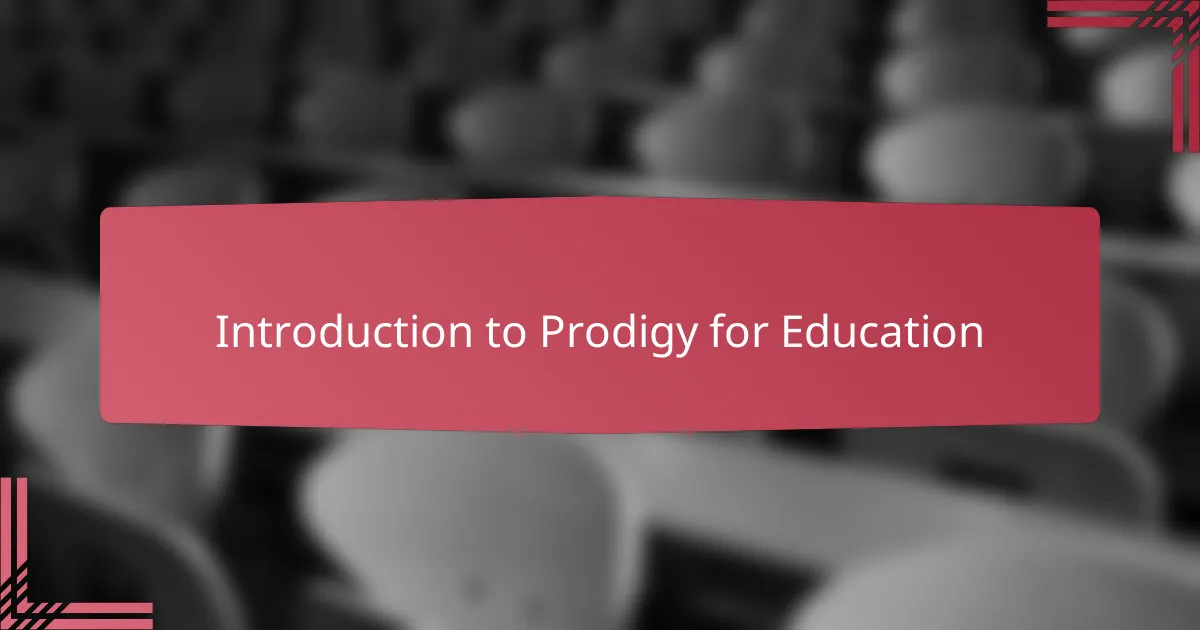
Introduction to Prodigy for Education
I first discovered Prodigy as a way to blend gaming with math, curious if it could actually make numbers feel less intimidating. To my surprise, it transformed those dry equations into challenges my students genuinely wanted to tackle. Have you ever watched kids light up because a math problem suddenly felt like an adventure rather than a chore?
What struck me most is how Prodigy adapts to each learner’s pace, meeting them where they are without making anyone feel left behind. This personalized approach reminded me why engagement is key—when students are engaged, learning stops being a task and becomes a journey. Isn’t that what every educator hopes for?
Beyond the fun and games, Prodigy offers real-time insights that helped me understand not just what my students know, but how they think. I found those moments revealing—when a simple dashboard could unveil deeper struggles or strengths, allowing me to respond thoughtfully. Could a tool like this be the ally every activist teacher needs to nurture critical thinking?

Strategies to Make Math Fun with Prodigy
One strategy I’ve found powerful is setting up friendly competitions within Prodigy’s game world. Watching students eagerly solve math problems to level up their characters reminded me of how motivation can bloom when challenge feels like play. Have you ever noticed how a little game-based rivalry can turn “math work” into something students actually ask for?
I also make sure to weave real-world math scenarios into the Prodigy challenges. When students see how fractions or equations connect to their lives—whether it’s budgeting in a virtual shop or planning quests—they start thinking beyond the screen. This approach really helped me shift math from abstract to accessible, sparking curiosity about why these concepts matter.
Another key move has been celebrating small wins often. In Prodigy, each correctly solved problem earns rewards, which I highlight to the class as moments of growth. That instant feedback creates a positive loop where confidence fuels more engagement, and I’ve seen students who usually shy away from math start raising their hands more. Isn’t that the kind of change we want to see?
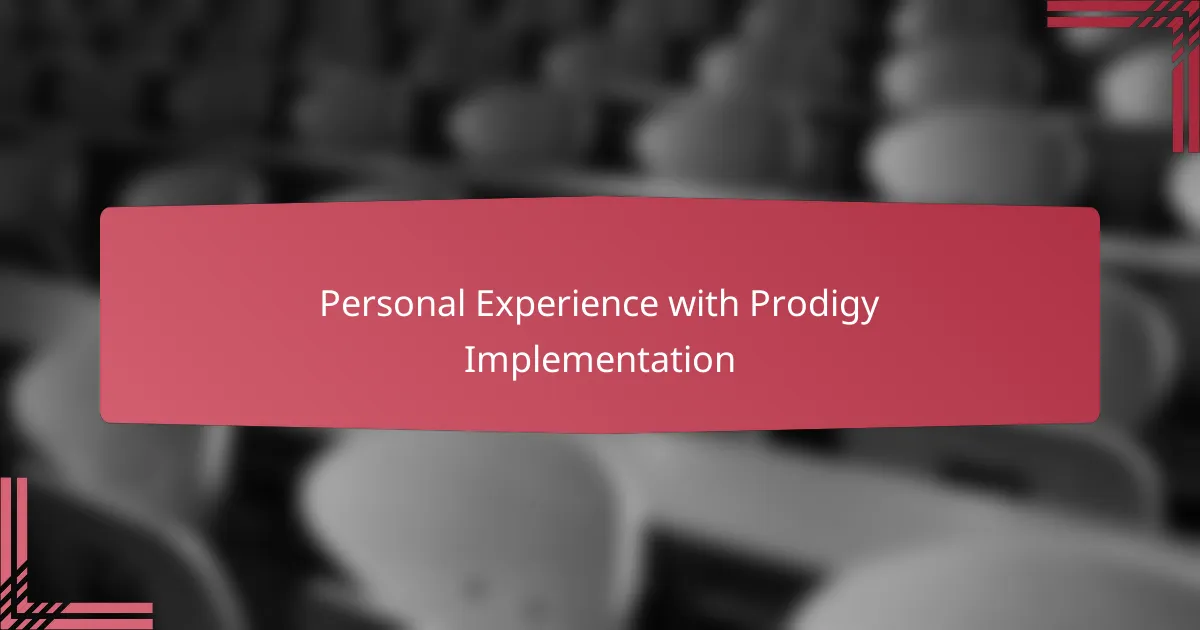
Personal Experience with Prodigy Implementation
Implementing Prodigy in my classroom was a game-changer. I remember one student who used to dread math class; after a few weeks with Prodigy, they eagerly shared their in-game achievements with me. Have you ever witnessed a transformation like that? It reaffirmed for me how powerful the right tool can be in shifting a student’s mindset.
What I found most impactful was how Prodigy allowed me to tailor challenges to each learner’s level without making anyone feel singled out. It created a space where mistakes were part of the learning adventure, not a mark of failure. From my experience, this kind of environment is essential for fostering true engagement and confidence.
There were moments when the data from Prodigy’s dashboard revealed surprising insights about how students approached problems. Those insights helped me adjust my teaching on the spot, making lessons more responsive and effective. Doesn’t that kind of immediacy in understanding your students feel like a rare but invaluable gift?
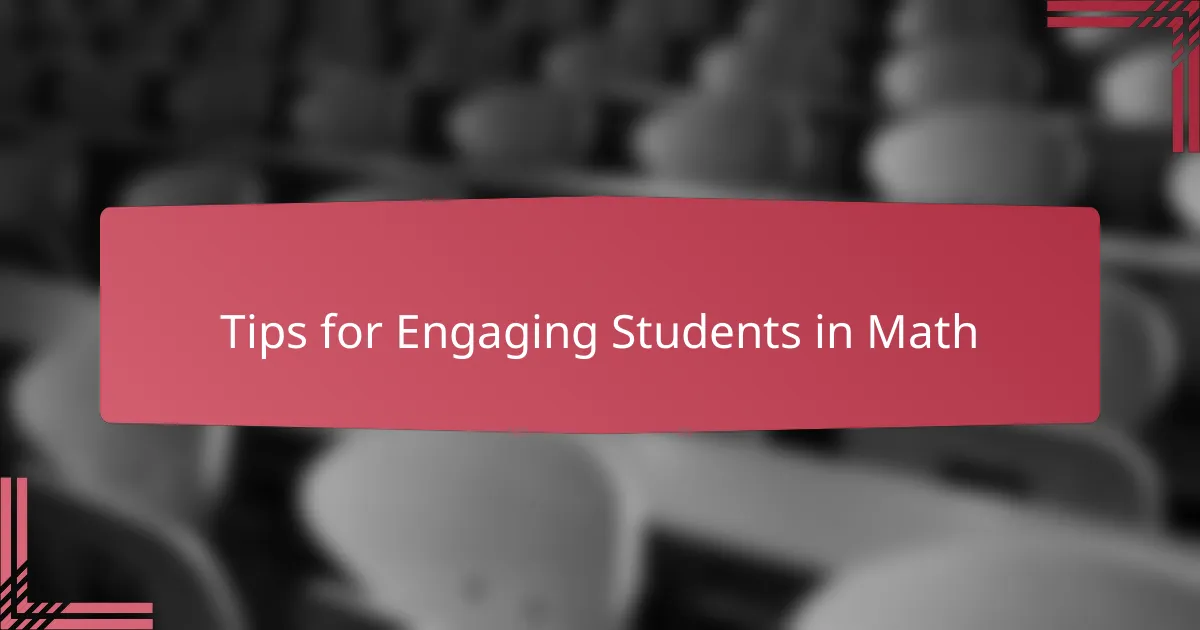
Tips for Engaging Students in Math
Getting students truly engaged in math often means going beyond the textbook and tapping into what excites them. I found that starting lessons with quick, relatable challenges—like puzzles or real-life problems—immediately piqued their curiosity. Isn’t it amazing how a simple twist can change the whole energy in the room?
Another tip that worked wonders for me was encouraging collaboration. When students team up to solve problems, I’ve noticed their confidence doubles and the fear of making mistakes fades away. Have you ever experienced how shared effort turns math from a solo struggle into a lively conversation?
Lastly, I learned the value of celebrating every small success, no matter how tiny. Praising a correct answer or clever strategy made my students light up and motivated them to keep going. Doesn’t it feel powerful to see students transform their mindset from “I can’t” to “I’m getting better”?
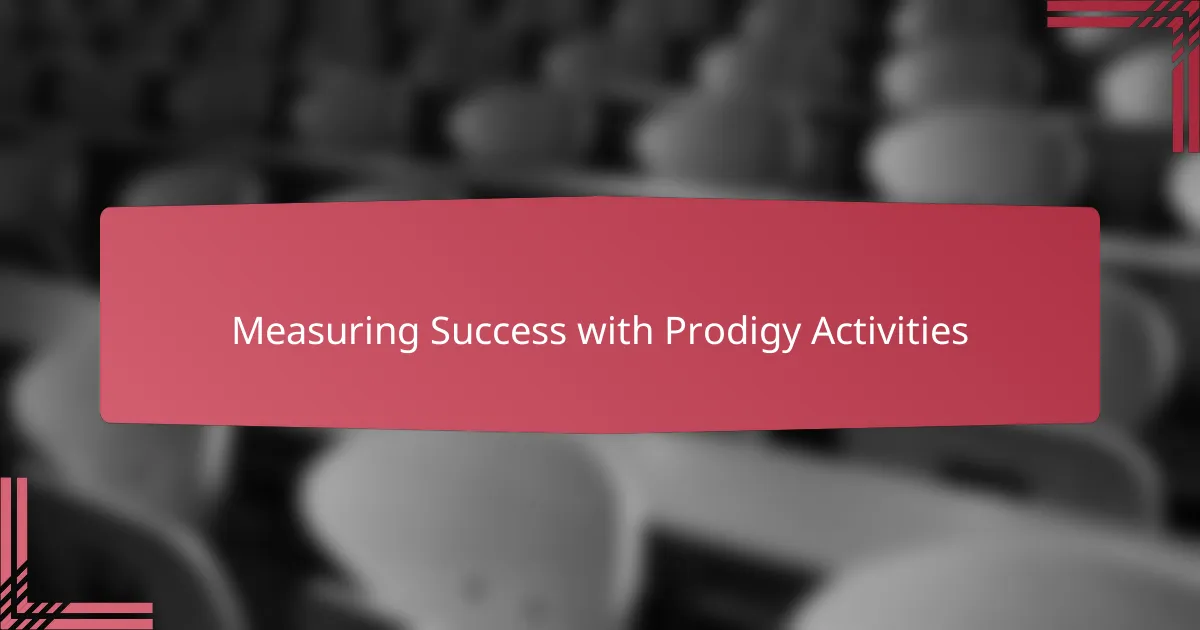
Measuring Success with Prodigy Activities
Measuring success with Prodigy activities goes far beyond just test scores in my experience. I’ve seen students who once hesitated with math problems gain confidence as they accumulated in-game rewards linked directly to their problem-solving skills. Isn’t it incredible how immediate feedback can turn uncertainty into motivation?
What really stands out to me is the detailed data Prodigy provides on student progress. This isn’t just about knowing who got an answer right; it’s about understanding where a student struggles and where they excel. Have you ever had that “aha” moment when a dashboard reveals insights that shift your entire teaching strategy? For me, those insights are priceless.
I also appreciate how Prodigy tracks growth over time, allowing me to celebrate real progress with students. When a student moves from frustration to mastery within weeks, that kind of measurable success feels deeply rewarding. Don’t we all want to see learning as a journey, marked by tangible milestones rather than just final grades?